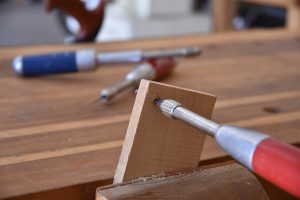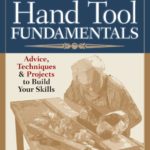We may receive a commission when you use our affiliate links. However, this does not impact our recommendations.
 Woodworkers drill holes. We drill lots of holes. Small ones especially. And we spend lots of money on methods of drilling holes. In the modern era, we’ve progressed from eggbeater drills through the tailed revolution and are now obsessed with compact and powerful battery-juiced motors.
Woodworkers drill holes. We drill lots of holes. Small ones especially. And we spend lots of money on methods of drilling holes. In the modern era, we’ve progressed from eggbeater drills through the tailed revolution and are now obsessed with compact and powerful battery-juiced motors.
Yet these designs pale in comparison to ones perfected in the 1800s and mass produced up until a half century ago. Imagine a drilling tool so ubiquitous that it’s safe to bet your grandma kept one in the kitchen junk drawer. A tool design so elegant, simple and perfect that I doubt it could be improved upon.
It says a lot to me that Frank Klausz collects plumb bobs. The man has the experience and skill to appreciate a wide range of tools and yet he collects one of the simplest tools created by humans. Plumb bobs date back to before Ancient Egypt and remained unchanged to the modern era. Their design was simple, effective and perfect from the get-go. Shoot, we build modern skyscrapers with them.
Well, we did. But today we tend to turn our backs to such good designs in favor of the fashion of technology despite the new being less durable, reliable and cost effective.
The pinnacle of small hole drilling tools in terms of form and function is the push drill. These things keep the force of your hand traveling straight through the bit into the wood – making small and plumb holes for screws and nails easy. Now think of the force applied by your hand with every other drilling tool. All induce rotation. Push drills are small, elegant, efficient and durable. They’re also fun.
Yet today, these ideas have been totally forgotten.
My favorite push drill is the Miller Falls No. 100 from 1948. The so-called “Buck Rogers” model. It’s an aluminum and steel design that will fit in your back pocket, hold eight different bits and will never need to be recharged. It was also the first tool to feature the hard plastic, tenite. (Plus, I crack up thinking that “Buck Rogers” was the premium line of Miller Falls tools. Can anyone picture fans of Lie-Nielsen referring to their bronze planes as the “Iron Man” line?)
Push drills are dirt cheap right now. I’ve bought a dozen for kids to use, with bits, for about $15 each. So find yourself a good one as they are a perfect design for the small holes needed by nails and screws.
 With American Woodworker’s Hand Tool Fundamentals, you’ll be well on your way to achieving handcrafted excellence in your woodworking projects. Begin with the essentials, like learning which tools and techniques are necessary to get started, as well ensuring these essentials are an everyday component of your shop. Once you’ve established the necessities, discover how to tune your tools so they’re consistently in prime working condition.
With American Woodworker’s Hand Tool Fundamentals, you’ll be well on your way to achieving handcrafted excellence in your woodworking projects. Begin with the essentials, like learning which tools and techniques are necessary to get started, as well ensuring these essentials are an everyday component of your shop. Once you’ve established the necessities, discover how to tune your tools so they’re consistently in prime working condition.
Here are some supplies and tools we find essential in our everyday work around the shop. We may receive a commission from sales referred by our links; however, we have carefully selected these products for their usefulness and quality.










Love my push drill! Use it all the time; no batteries to wear out (although I might). Mine is similar to Shawn’s, a black resin Yankee version from the ’50s. Sits right next to the eggbeater drill atop my set of Irwin brace bits. They all like to hang out.
I watched an episode of “How It’s Made: Dreamcars” the other night and in it they were using push screwdrivers like the Yankee ones to install fasteners in BMW’s on the assembly line.